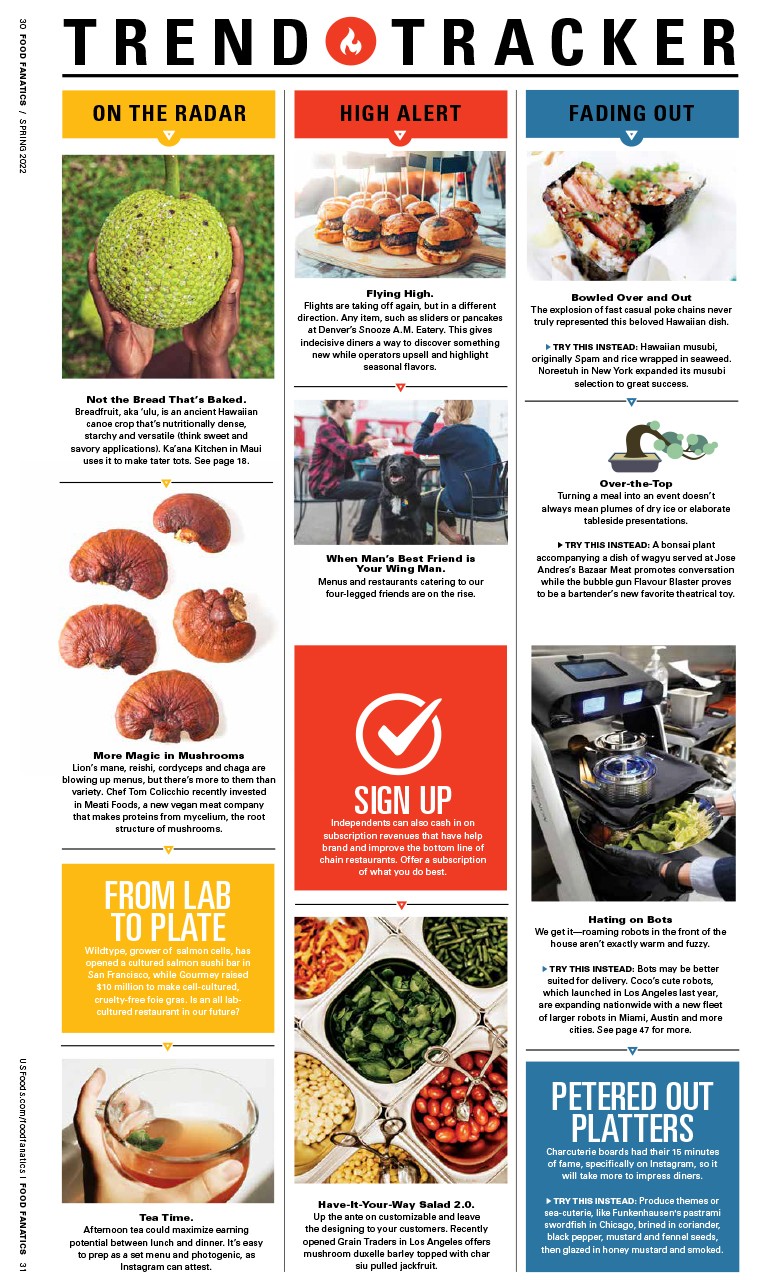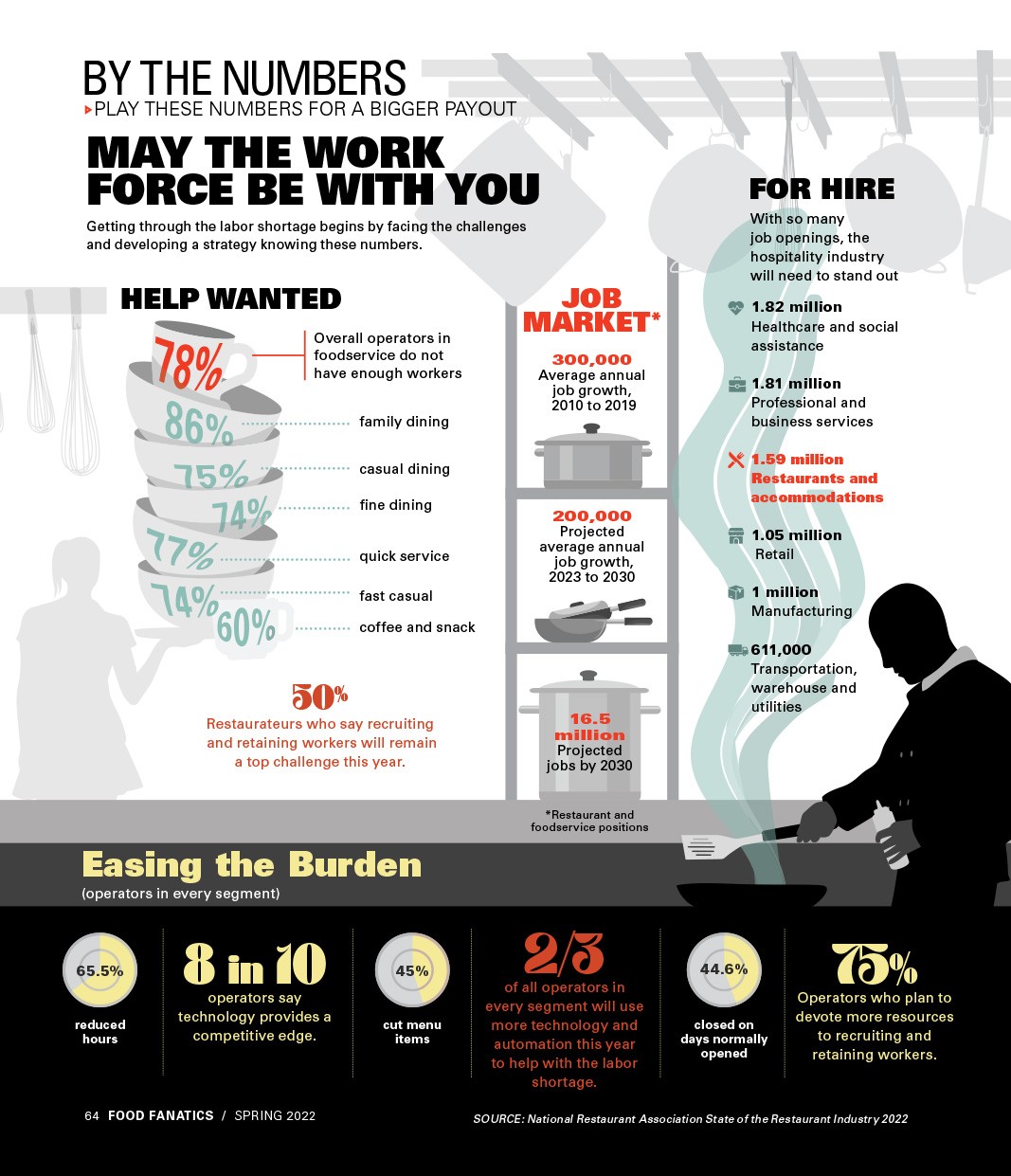EASY DOES IT
Executing a simpler menu can relieve labor woes
As the labor crunch continues to keep its chokehold on hospitality, a reliable, well-staffed back of the house seems elusive.
Fortunately, there are many ways to modify production when staff call out because of illness, parenting troubles or pandemic ennui. Keyword: Easy. Items that require little prep up front or as they come off the line. Bonus points for dishes or components that share the same sauces, dressings or marinades. Even better for easy upsell dishes.
Chefs recommend these time-tested menu shifts to be ready for anything.
Recipes from this article:
CEVICHES AND CRUDOS
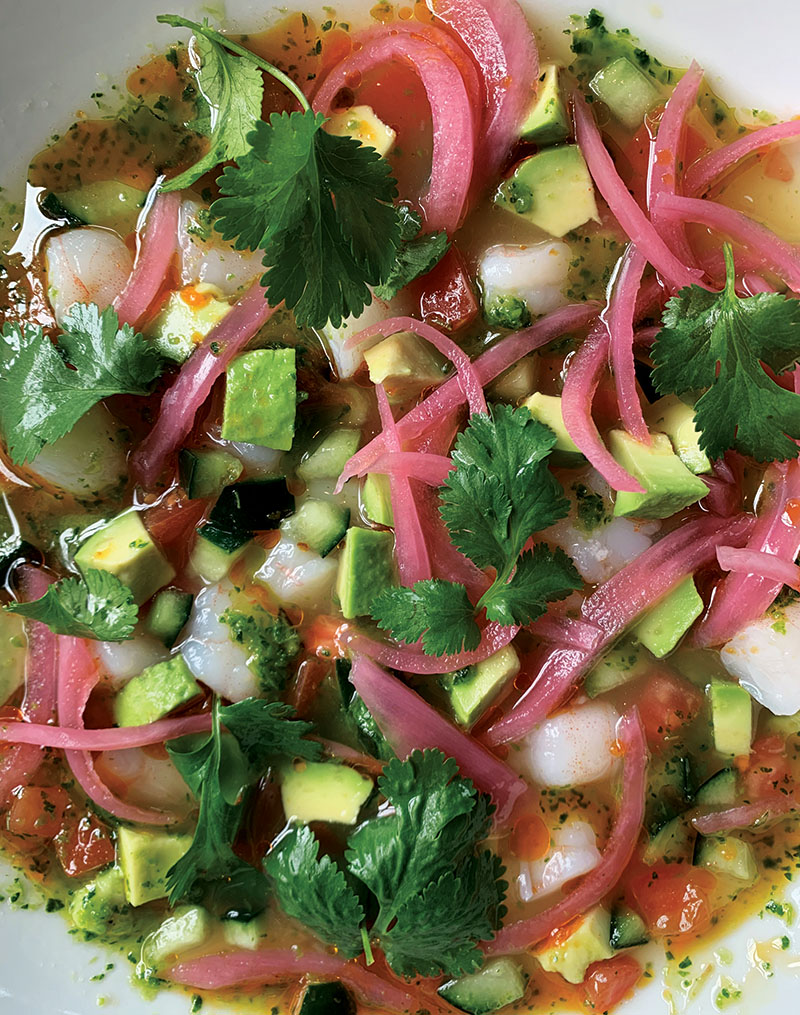 ❱ Why it’s easy: Prepped and chilled in advance, these cold menu items require little final execution. They also leave plenty of room for alternating local, seasonal ingredients and adding extra pop with pre-batched sauces.
❱ Why it’s easy: Prepped and chilled in advance, these cold menu items require little final execution. They also leave plenty of room for alternating local, seasonal ingredients and adding extra pop with pre-batched sauces.
❱ Why it works: “More and more people are not afraid to eat raw fish,” says Executive Chef Eric Bartholomew of LaCo in Seacrest, Florida. “Ceviche not only speeds up execution but gives that visual wow factor and fresh, vibrant flavors.”
❱ Try it: Bartholomew’s Seacrest Ceviche features local shrimp in a bright and spicy jalapeño-lime broth with crunchy red onions, cucumbers and creamy avocado. Red snapper works too.
FLASH-FRIED SIDES
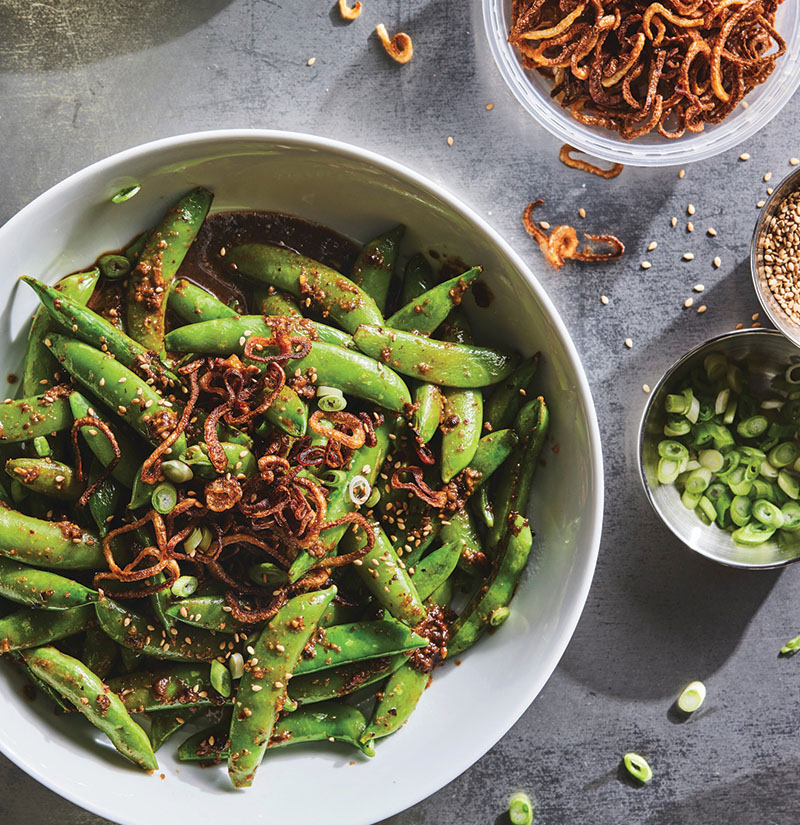 ❱ Why it’s easy: A quick sauté of marinated seasonal vegetables requires no finishing touches and gets out of the kitchen fast.
❱ Why it’s easy: A quick sauté of marinated seasonal vegetables requires no finishing touches and gets out of the kitchen fast.
❱ Why it works: Brussels sprouts, snap peas, cauliflower and all things vegetables remain popular with diners.
❱ Try it: Chef Dan Jacobs of DanDan in Milwaukee swears by marinating snap peas in a purée of garlic, fermented black beans and black vinegar, then wok-frying until tender. “It sells itself,” he says.
The combination works just as well with Brussels sprouts in the fall and cauliflower year-round.
NOSTALGIA-BASED FROZEN DESSERTS
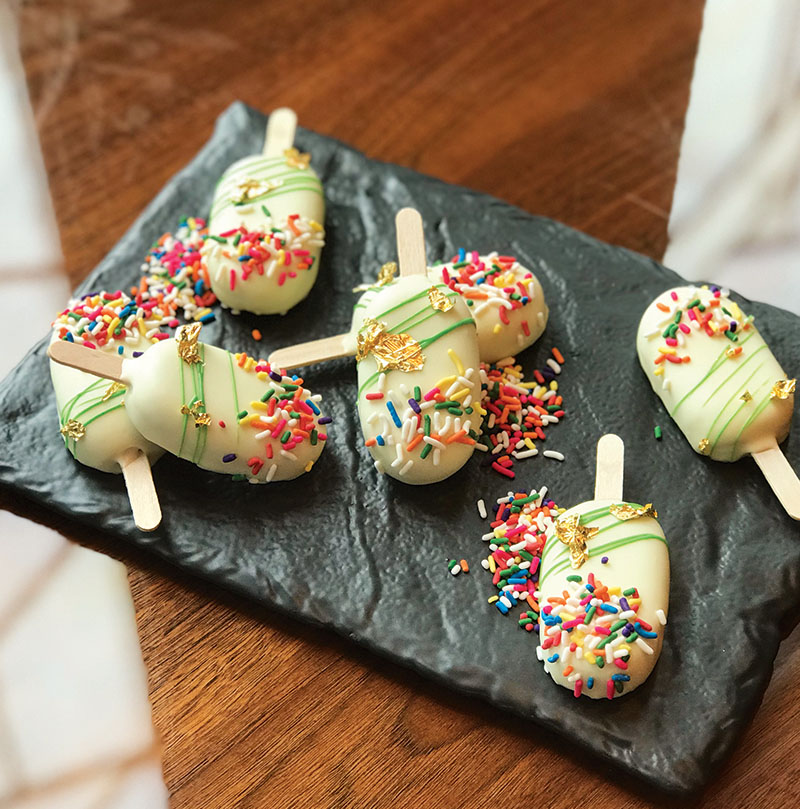 ❱ Why it’s easy: Frozen items last long, can be cost-effective and easily impress.
❱ Why it’s easy: Frozen items last long, can be cost-effective and easily impress.
❱ Why it works: “It’s just what people need when the world is tough,” says New York Pastry Chef Stephen Collucci of The Tavern and Sweetsies by SC on how a little nostalgia goes a long way. “Who doesn’t want a vehicle to escape to easier times? Smart menu strategy helps items sell themselves.”
❱ Try it: Collucci’s recent trio of ice cream sandwiches includes chewy gingersnaps with vanilla ice cream, whoopie pies with cookies ‘n’ cream ice cream and peppermint candy, and brown butter chocolate chip cookies with coffee ice cream and nibs. Combinations are endless.
FRYER FAVORITES
❱ Why it’s easy: These bulk-prepped items rely on your prep team, cook quickly and need few finishing touches.
❱ Why it works: Diners love items they don’t make at home.
❱ Try it: Consider various root vegetable fries, vegetable and meat dumplings, wontons and pot stickers – anything that builds flavor during prep time and needs little or no accompaniments other than a dipping sauce.
TACOS AND ENCHILADAS
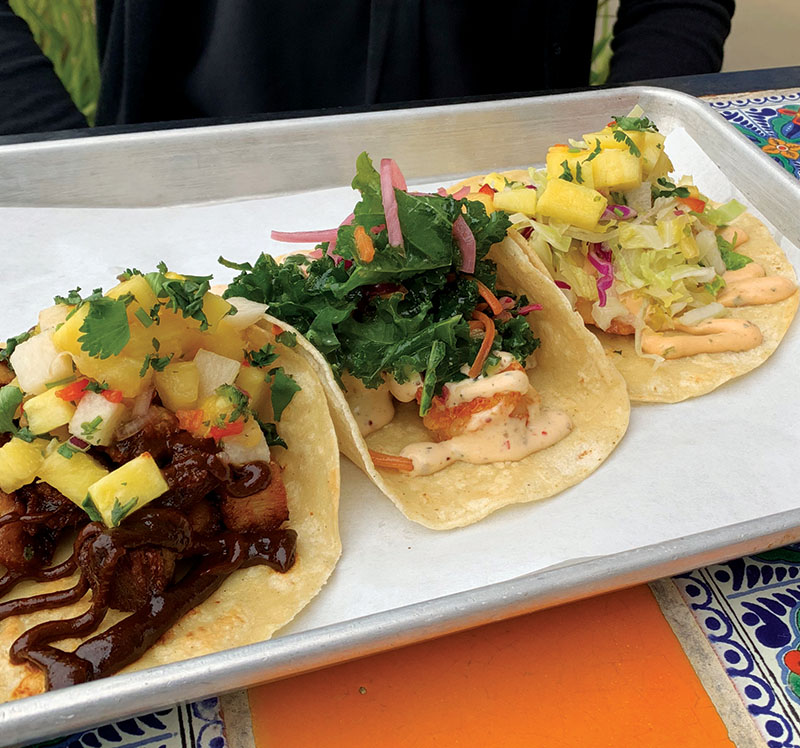 ❱ Why it’s easy: Braising proteins, building sauces and prepping fresh ingredients in advance means service is assemble and go.
❱ Why it’s easy: Braising proteins, building sauces and prepping fresh ingredients in advance means service is assemble and go.
❱ Why it works: Diners want intense, authentic and comforting flavors packed in fun presentations.
❱ Try it: The possibilities are endless. Focus on marinated and braised proteins, flavor-packed sauces and prepped vegetables to ensure few finishing touches.
SHARED PLATES
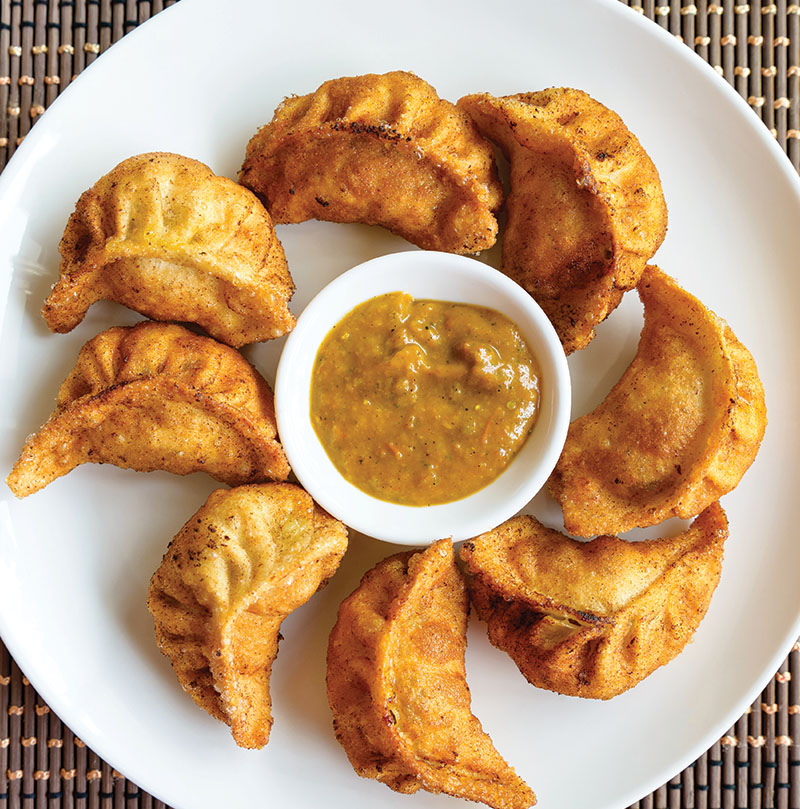 ❱ Why it’s easy: Featuring one main component and often batch-prepped, tapas and shared sides offer endless variety and can be plated simply.
❱ Why it’s easy: Featuring one main component and often batch-prepped, tapas and shared sides offer endless variety and can be plated simply.
❱ Why it works: “People are more accustomed to family-style, shareability of a menu,” says Bartholomew. An extra side or shared plate also helps increase the check average.
❱ Try it: Consider customer favorites like patatas bravas, baked cheeses and anything that can easily be shared. Then vary flavors or accompaniments to keep things fresh for your regulars.
HIGH-RATIO CAKES
❱ Why it’s easy: High-ratio (when the recipe has more sugar than flour) and oil-based cakes have a long shelf life, and some get even more flavorful and moist as they sit. They’re fast to plate too.
❱ Why it works: Even with the rise of healthier items, diners still want comfort, nostalgia and indulgence.
❱ Try it: Collucci relies on his carrot cake in the spring, finishing it with accompaniments like coconut ice cream and braised pineapple prepped in advance.
Time-Saving Hacks
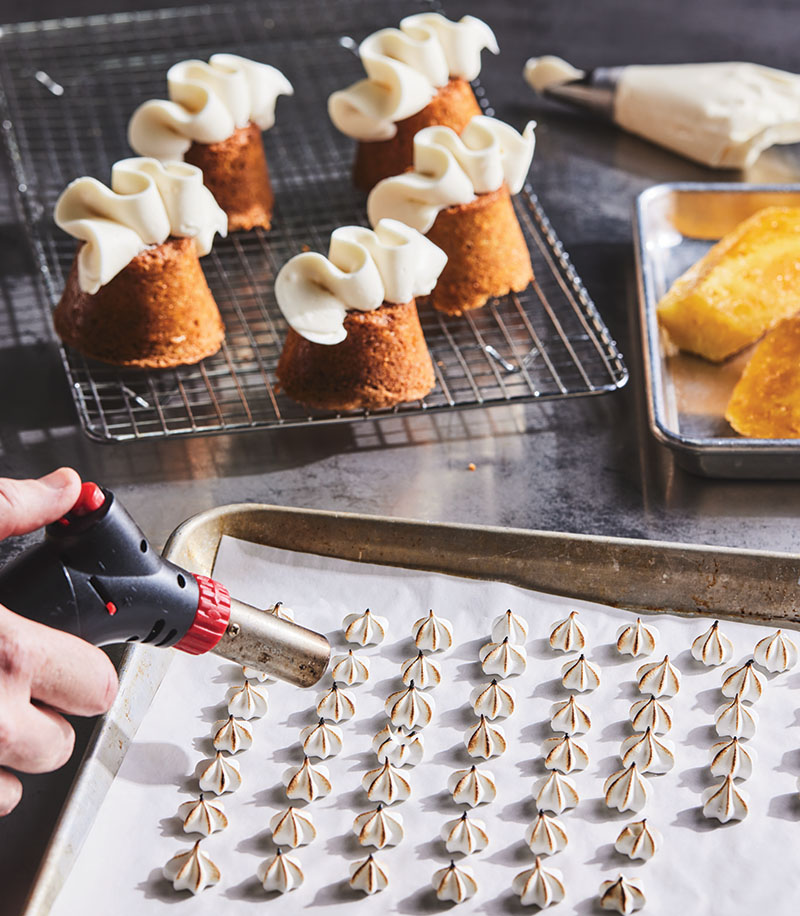 Reducing the overall size of the menu and cross-utilizing ingredients are the first steps to easing labor constraints. Now dig a little deeper.
Reducing the overall size of the menu and cross-utilizing ingredients are the first steps to easing labor constraints. Now dig a little deeper.
❱ Sous vide proteins. Steaks and chops eat up time at the stove. Cook them via sous vide to set textures and temperatures, then quickly finish on the grill or flat top.
❱ Lean into sauces and marinades. These require pre-service labor and inactive time while packing dishes with flavor, reducing touches during execution. They also keep well, reducing potential product loss.
❱ Keep it simple. Few diners desire overly complicated dishes, especially for takeout. You can’t go wrong with quality ingredients prepared to deliver flavor, texture, aroma and color.
❱ Consider cold. Can any item on the menu be flipped into a cold presentation? Grain salads, hummus, raw fish and on-trend charcuterie boards, such as low carb, keto or meatless, offer endless variety and batch-store easily.
 ❱ Question new ingredients. Pandemic-era inflation means costs are rising. Rather than experimenting with unfamiliar dishes, minimize product loss by sticking close to tried-and-true favorites with minor tweaks.
❱ Question new ingredients. Pandemic-era inflation means costs are rising. Rather than experimenting with unfamiliar dishes, minimize product loss by sticking close to tried-and-true favorites with minor tweaks.
❱ Consider your staff. The pandemic has heightened the stressors of working in hospitality. Make sure your staff is well paid, safe and respected, and they’ll keep showing up.


